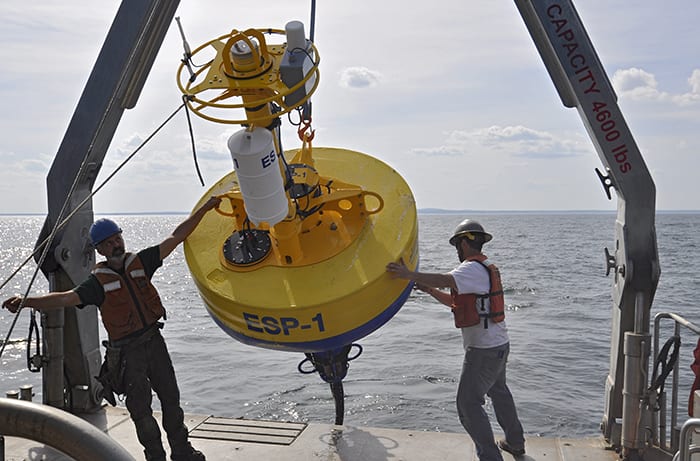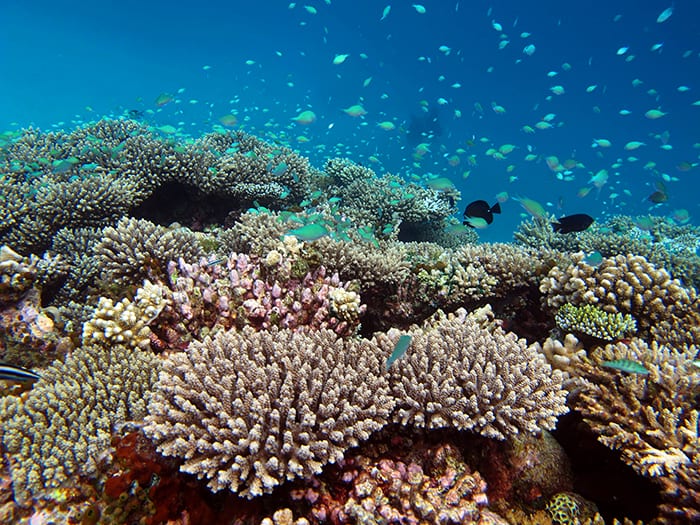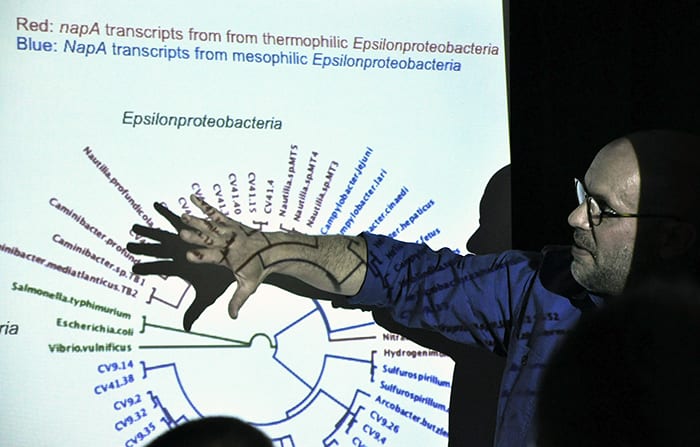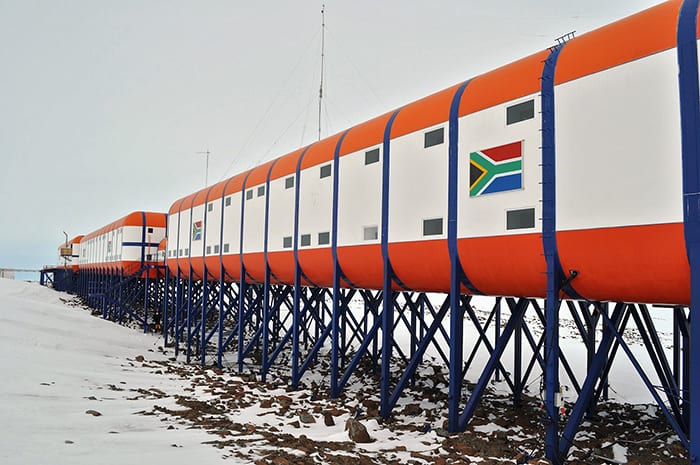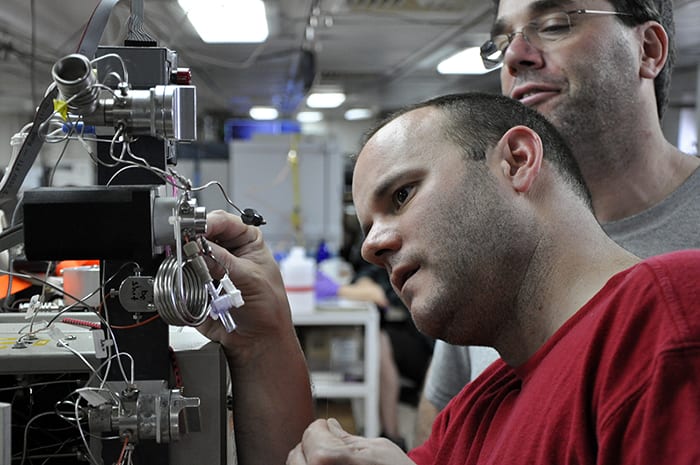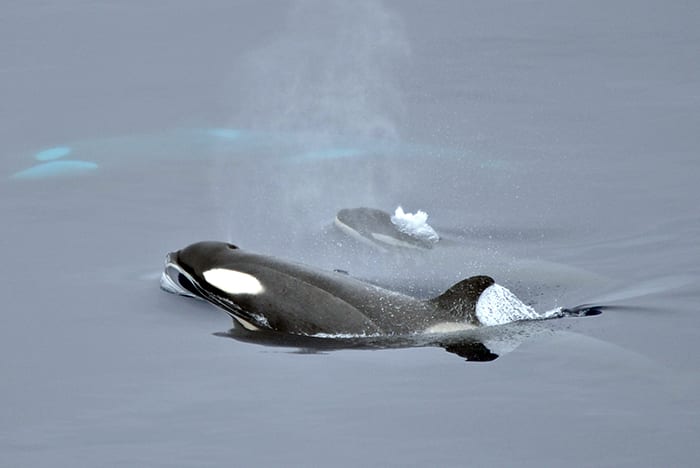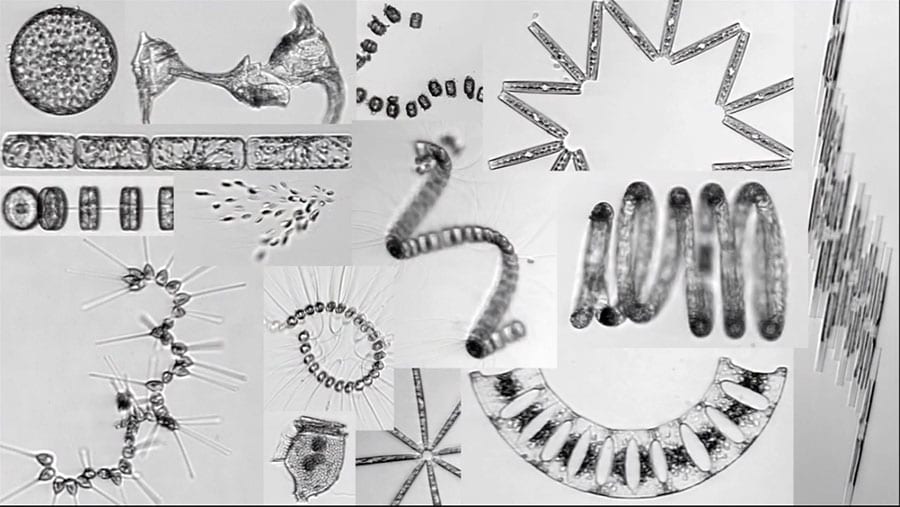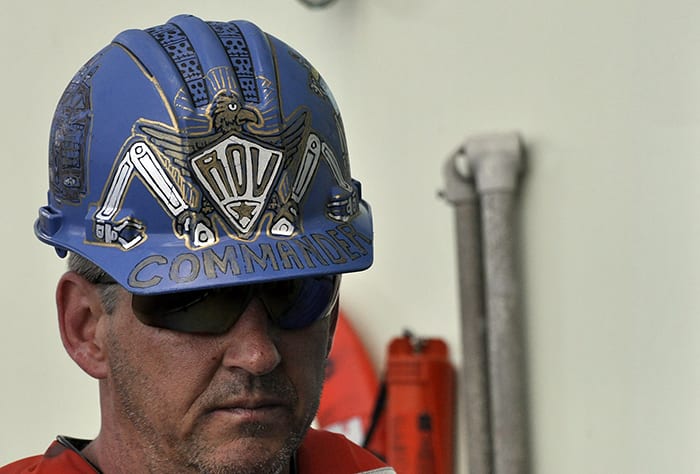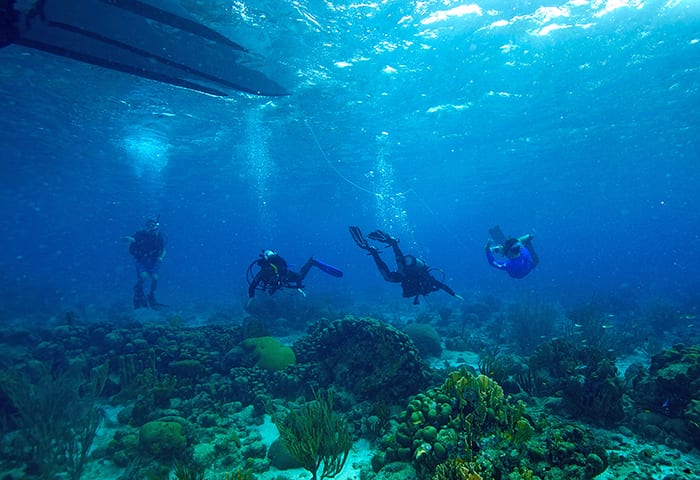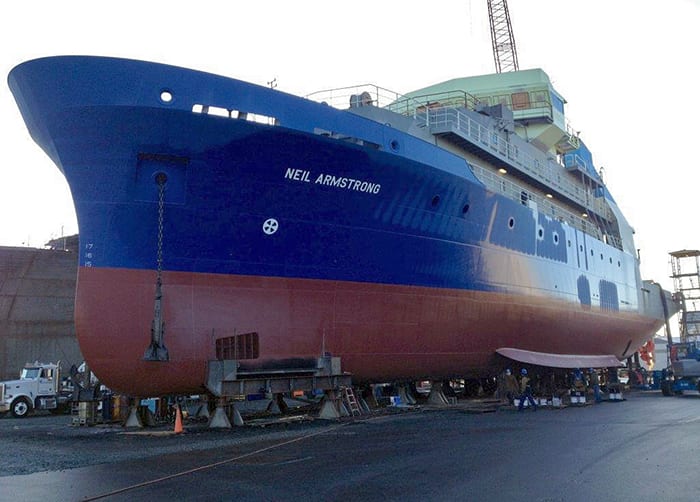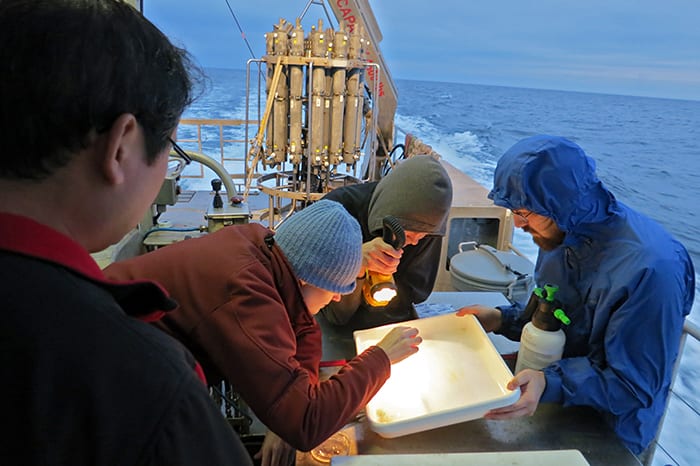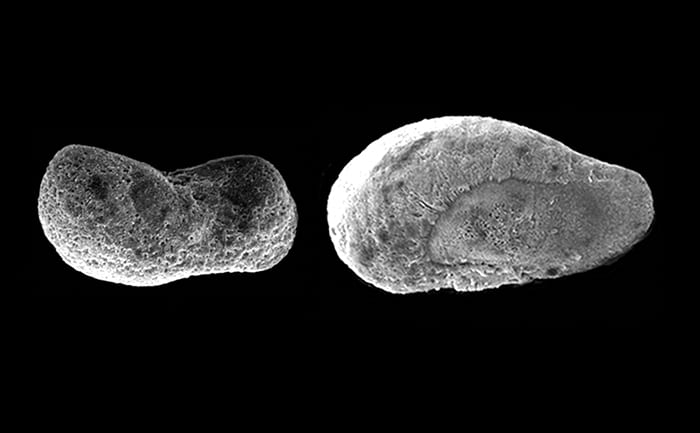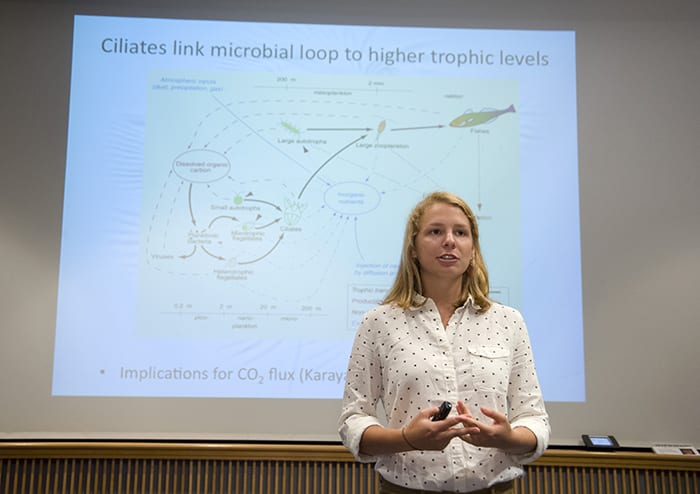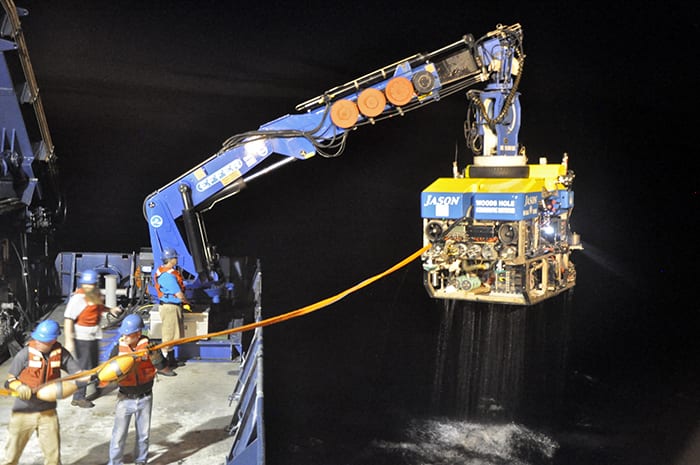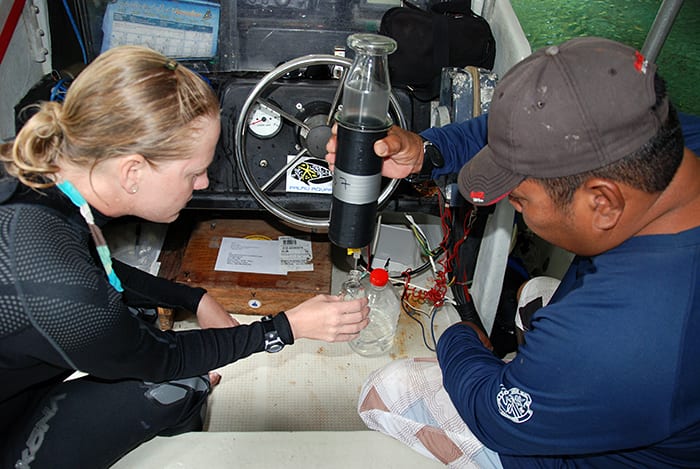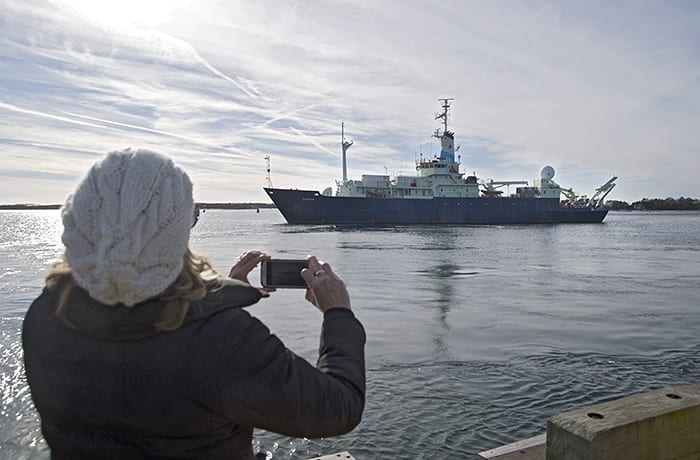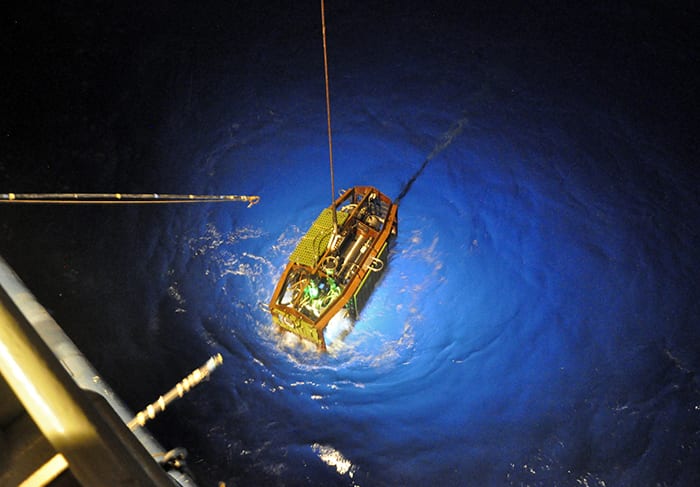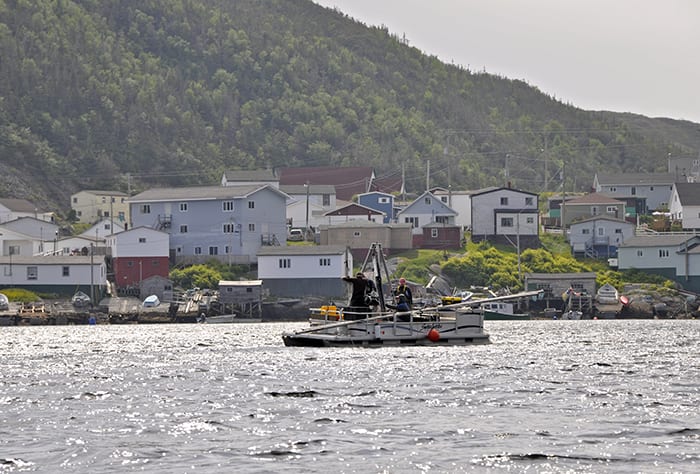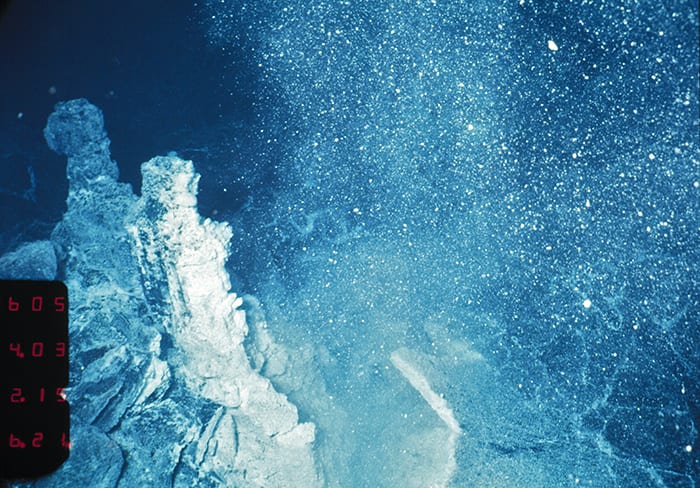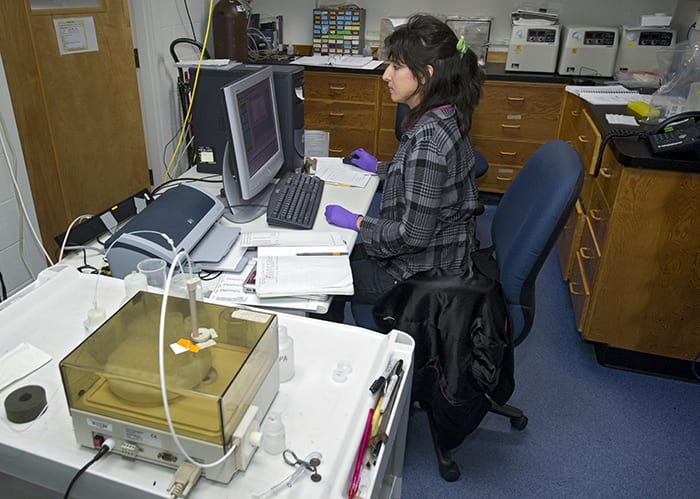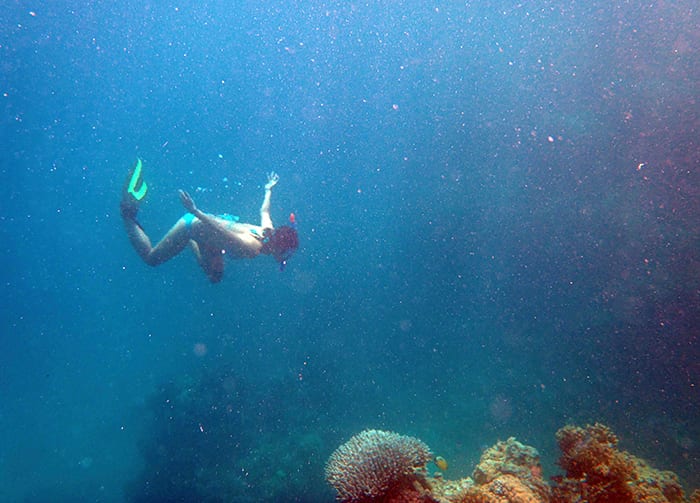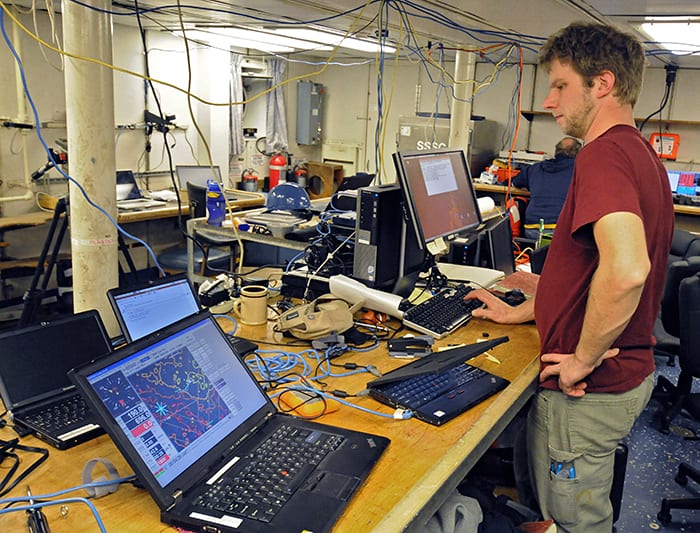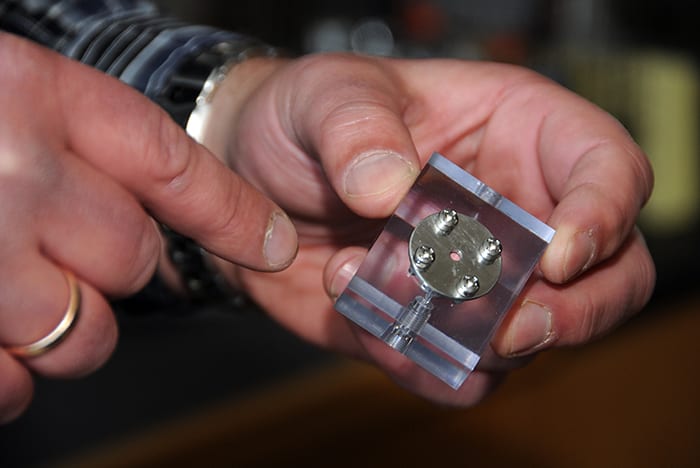Multimedia
A Lab in the Sea
WHOI scientists deployed a new instrument last spring that they believe could revolutionize oceanography. WHOI engineering assistants Will Ostrom (left) and Jeff Pietro helped put the instrument, called an Environmental…
Read MoreLiving Reefs
An abundance of life inhabits the coral reefs surrounding Vavvaru Island in the Maldives. WHOI Scientists Konrad Hughen, Justin Ossolinski and Amy Apprill, along with King Abdullah University of Science…
Read MoreSeminar at Sea
Early during a cruise to hydrothermal vents on the East Pacific Rise, microbiologist Costa Vetriani of Rutgers University gave a presentation to other members of the scientific team about the…
Read MoreHome (Way) Away from Home
The South African Antarctic base SANAE IV was just the first stop in late 2013 on a lengthy trip for WHOI chemist Phoebe Lam. After a short stay, she boarded…
Read MoreGas It Up
WHOI research associate Sean Sylva (foreground) and geochemist Jeff Seewald troubleshoot a blocked valve in a gas chromatograph, an instrument they used to analyze the gas content of fluids collected…
Read MoreWhale Watch
Orcas, also known as “killer whales,” are considered apex predators, occupying a niche at the top of the food web with few or no predators of their own. WHOI chemist…
Read MoreSea-truthing near Martha’s Vineyard
Interview with biological oceanographer Heidi Sosik.
Read MoreJason Expedition Leader
Tito Collasius, expedition leader of the team that operates the remotely operated vehicle (ROV) Jason sports his trademark hard hat on a recent research cruise. The son and grandson of…
Read MoreIsland Hopping
On a recent cruise aboard Pangaea Exploration’s vessel Sea Dragon, members of WHOI biogeochemist Anne Cohen’s lab sailed across the Caribbean to sample the skeletons of centuries-old coral colonies. MIT-WHOI…
Read MoreNext in Line
When it joins the Institution’s fleet late in 2014, the newly-built R/V Neil Armstrong will be the twentieth ship operated by WHOI. In the early years of ocean science research…
Read MoreLight Work
Aleck Wang, Amy Maas, Gareth Lawson, and Alex Bergan (left to right) ventured out on WHOI’s coastal research vessel Tioga this fall to study changes in the marine environment of…
Read MoreThe State of Statoliths
Squids make statoliths, an important part of their balance organ, from calcium carbonate. But increasing atmospheric carbon dioxide levels is causing ocean acidification, which reduces carbonate in the oceans and…
Read MoreFuture of Ocean Science
Summer Student Fellow Anna Nisi shares the results of her research on the marine microbial food chain at the end of the Summer 2013 session. The Carleton College student worked with…
Read MoreUp From Below
A crane hoists Jason, WHOI’s 9000-pound remotely operated vehicle (ROV), onto the deck of the research vessel Atlantis. The deep-sea robot had just spend several days more than one mile…
Read MoreResilient Reefs
WHOI post-doctoral scholar Kathryn Shamberger (left) and an employee of the Palau International Coral Reef Center collect a water sample during field research in November 2013. Shamberger is part of…
Read MoreHolding the Key
As the oceans become more acidic due to the increase of carbon dioxide in the atmosphere, marine scientists are studying how organisms, such as the several hundred young squid developing…
Read MoreThere and Back Again
R/V Knorr is a common sight in Woods Hole, but its departure still draws a crowd, especially when it leaves for far-flung places. Here, the ship pulls away from the WHOI…
Read MoreDynamic Duo
The remotely operated vehicle (ROV) Jason is actually one part of a system that also includes the ROV Medea. Shown here during a recent nighttime recovery in the Pacific above…
Read MoreLittle Boat that Can
Not all of WHOI’s research fleet are large, far-ranging vessels with large crews, but all take scientists places they couldn’t otherwise go to gather data they couldn’t otherwise get. Here,…
Read MoreSeafloor Snowblower
Scientists diving in the submersible Alvin in 1991 found themselves in something that looked like a snowstorm on the bottom of the sea. They had arrived soon after a seafloor…
Read MoreCalcium in the Carbon Cycle
MIT-WHOI Joint Program graduate student Sara Rosengard measures the amount of calcium in seawater samples using an inductively coupled plasma mass spectrometer (ICPMS). The amount of calcium helps Rosengard determine…
Read MoreDown Time
After a trying day of bathymetric surveys, a science party from WHOI and King Abdullah University of Science and Technology (KAUST) spent some time free diving over Shi’b al Qasriyyah,…
Read MoreNew Bedford Family Science Nights
On Thursday, January 16, from 5:30-7:30 p.m., New Bedford’s Ocean Explorium will host the first of two free “Family Science Nights.” In addition to special activities, the event will feature…
Read MoreOxygen On Tap
This small device allows scientists to measure oxygen levels in fluids collected at the seafloor under very high pressure. Designed by WHOI scientists Craig Taylor and Jeff Seewald, as well…
Read More
